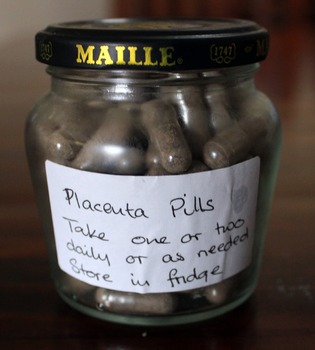Why are healthy women in wealthy societies suddenly considering eating their placentas, given that the practice has been regarded with disgust for a good two to three hundred years, and that its health benefits are contested? Perhaps it’s because, in an era of medicalized childbirth, we’re regaining an awareness of–and connection to–that mysterious beret-shaped organ that sustains babies in the womb, and it no longer feels right to toss it in the trash.
But there’s more to it: We’re afraid of postpartum depression (and its severe form, postpartum psychosis) and are willing to try anything to avoid those conditions. Contemporary childbirth looks almost nothing like childbirth in the so-called “bad old days”; in colonial America, in Europe, and in many traditional societies today, women are not left on their own with their new babies, but are bolstered by vigorous community support, such that other women care for older children, cook, and clean so that the newly delivered mother can rest in bed for a good month or so.
So, what are we really trying to feed when we contemplate eating placentas? Lost micronutrients, or a lost sense of belonging and mutual care that placenta eating once provided?
Read the rest of the post at the CT Women’s blog, her.meneutics, here–if you’ve got the stomach for it!
{really, it’s not that bad…it’s just a mini-history of placental significance and some reflections on the need for community support in the time following childbirth…}












